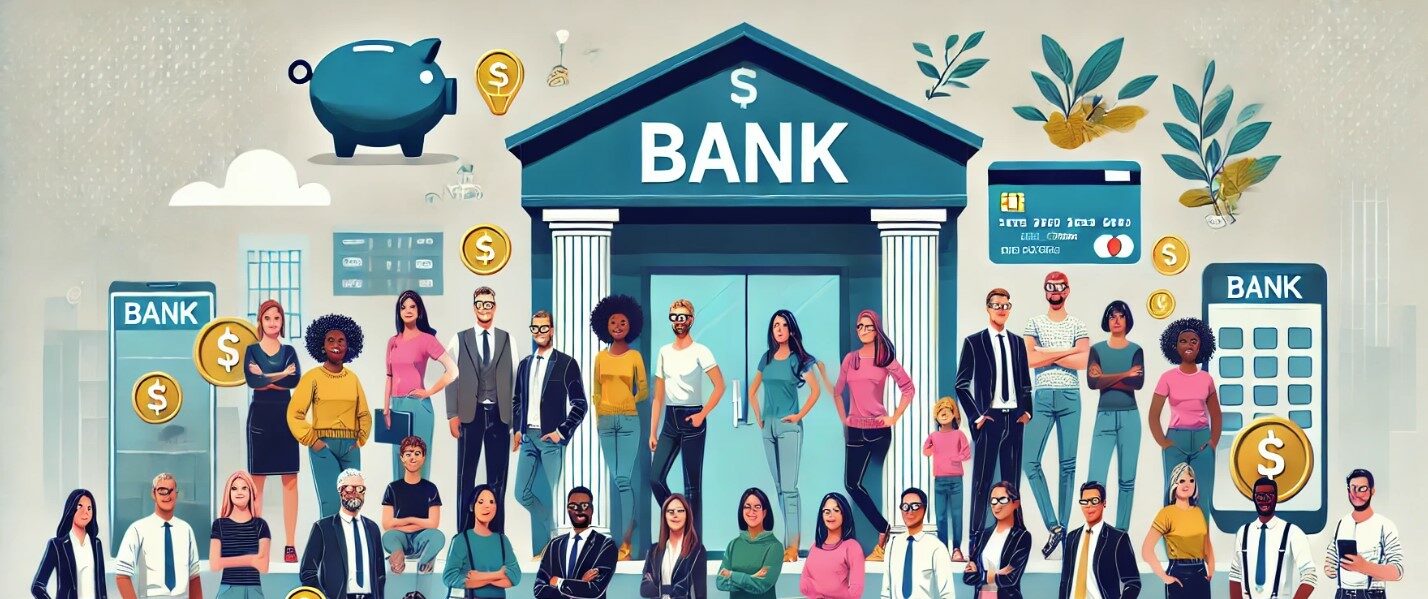Introduction
In 2023, about 4.2% of U.S. households—equivalent to approximately 5.6 million families—remained unbanked. Despite years of economic growth and increased financial services accessibility, millions of Americans continue to operate outside of the traditional banking system.
The latest FDIC National Survey of Unbanked and Underbanked Households provides an in-depth look at these challenges and highlights what needs to change. Understanding the struggles of the unbanked is crucial, not just for policymakers but also for anyone who wants to see a more inclusive, economically stable society.
Understanding the Unbanked Population
The unbanked rate in the U.S. remained largely stable between 2021 (4.5%) and 2023 (4.2%), but this figure represents significant progress compared to the 7.0% unbanked rate in 2011. The decline points to more people gaining access to bank accounts over time, partly due to socioeconomic improvements like rising income and education levels. However, certain demographic groups continue to face major challenges in accessing financial services.
Lower-income households, less-educated individuals, and minority groups such as Black, Hispanic, and American Indian or Alaska Native populations remain disproportionately represented among the unbanked.
For example, the 2023 survey found that 11.2% of working-age households with disabilities were unbanked, compared to just 3.7% among those without disabilities. Similarly, Black households had an unbanked rate of 10.6%, while the rate among Hispanic households was 9.5%, both significantly higher than the 1.9% rate among White households. These disparities highlight the ongoing barriers many Americans face when trying to access the traditional banking system.
Reasons for Not Having a Bank Account
The survey found that financial constraints are the primary reason many households remain unbanked. Specifically, 42.3% of unbanked households cited “not having enough money to meet minimum balance requirements” as their main reason for not having a bank account. This reflects a vicious cycle where those who are financially struggling are unable to access the very services that could help them stabilize their finances.
Distrust of banks was the second-most cited reason, with 15.7% of respondents indicating that they do not trust financial institutions. Unpredictable fees were also a significant concern for unbanked households. Interestingly, 33.4% of unbanked households mentioned fees or minimum balance requirements as the main reason for not having an account. These concerns reveal the need for financial institutions to rebuild trust and offer products that are both accessible and transparent.
How the Unbanked Manage Their Financial Needs
Without access to traditional banking, unbanked households often rely on nonbank financial services to manage their financial needs. This includes using prepaid cards, nonbank money orders, and online payment systems such as PayPal or Cash App. These services often fill the gaps left by the lack of a bank account, but they come at a cost—often in the form of high fees that further burden already vulnerable households.
The survey shows that 49.7% of households used online payment services in 2023, with unbanked households more likely to use them for essential transactions, like paying bills and receiving income. For instance, 60.8% of unbanked households with online payment accounts used them to pay bills, compared to just 24.5% of banked households. This dependence on nonbank services to handle core financial activities highlights how unbanked households are making do but often at a higher cost and with fewer safeguards.
Technology and Banking Access
Mobile banking is growing rapidly among both fully banked and underbanked populations, but adoption remains slower among unbanked households. In 2023, nearly half of all banked households (48.3%) used mobile banking as their primary method of accessing accounts. However, this technological shift has not fully reached unbanked populations, often due to lack of smartphone access or discomfort with digital tools.
The barriers are particularly evident among older households and those with lower education levels, which tend to favor in-person banking methods. Expanding digital literacy and providing affordable technology access are crucial steps in ensuring these households can benefit from modern banking conveniences.
Implications for Financial Inclusion
The FDIC survey highlights significant opportunities for improving financial inclusion. Financial institutions, for instance, can help by offering no-fee or low-fee accounts with simple, clear terms. Addressing the concerns of unbanked households—such as unpredictable fees and distrust of banks—is critical to building relationships with these communities.
Policy interventions are also essential. Policymakers could incentivize banks to establish branches in underserved areas or offer services tailored to low-income customers. Additionally, community organizations can play a vital role in financial literacy education, helping unbanked households understand the benefits of banking and how to use these services to improve their financial stability.
Call to Action
Community organizations, financial institutions, and policymakers all have roles to play in addressing the needs of unbanked households. Financial literacy programs that help people understand how to navigate banking fees and build trust in financial institutions can make a real difference. Moreover, community-based campaigns that provide resources and assistance in opening bank accounts could help bridge the gap.
Conclusion
The FDIC’s 2023 survey paints a complex picture of financial inclusion in the United States. While the unbanked rate has decreased over the past decade, millions of households still face significant barriers to accessing banking services. Addressing these challenges requires a collaborative approach—one that includes financial institutions offering more accessible products, community organizations promoting financial literacy, and policymakers creating an environment that supports inclusion. By working together, we can help ensure that everyone, regardless of income or background, has the opportunity to participate in the financial system and benefit from its advantages.
